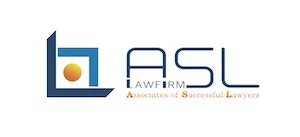Intellectual property (IP) refers to creations of the mind, such as inventions, literary and artistic works, designs, symbols, names, and images used in commerce. IP is protected through patents, copyrights, trademarks, and trade secrets, providing creators with exclusive rights over their creations for a limited period.
Technology transfer, on the other hand, is the process of transferring knowledge, technologies, or innovations from one entity (e.g., a research institution, university, or company) to another entity (e.g., another company, industry, or society) for further development, commercialization, or use.
The relationship between intellectual property and technology transfer is essential in promoting innovation and economic development. When organizations and researchers create new technologies or innovations, they often seek to protect their intellectual property rights through patents, copyrights, or other forms of IP protection. This protection encourages further investment in research and development since inventors and creators can reap the rewards of their efforts and prevent others from exploiting their creations without permission.
Technology transfer involves the legal and contractual processes through which intellectual property rights are licensed or transferred from the original creators to other entities, typically for commercialization or further development. These transfers can occur through various means, including licensing agreements, joint ventures, research collaborations, and technology transfer offices at academic institutions.
The technology transfer process aims to bridge the gap between research and practical applications by enabling the transfer of innovations from the academic or research setting to the commercial sector. It allows companies to access new technologies and expertise they may not have developed in-house, while also providing revenue streams and recognition to the original inventors.
Additionally, technology transfer contributes to societal benefits by making cutting-edge technologies and knowledge more widely available. For example, technology transfer from academic institutions can lead to the development of new medical treatments, cleaner energy solutions, and improved industrial processes.
However, there can also be challenges and debates surrounding intellectual property and technology transfer. Some argue that overly restrictive IP protection can hinder innovation and restrict access to valuable knowledge, especially in developing countries or in fields with significant public interest, like healthcare. Balancing the need for protection with promoting accessibility and fair use is an ongoing challenge for policymakers and stakeholders in the innovation ecosystem.
The content of this article is intended to provide a general guide to the subject matter. Specialist advice should be sought about your specific circumstances.


